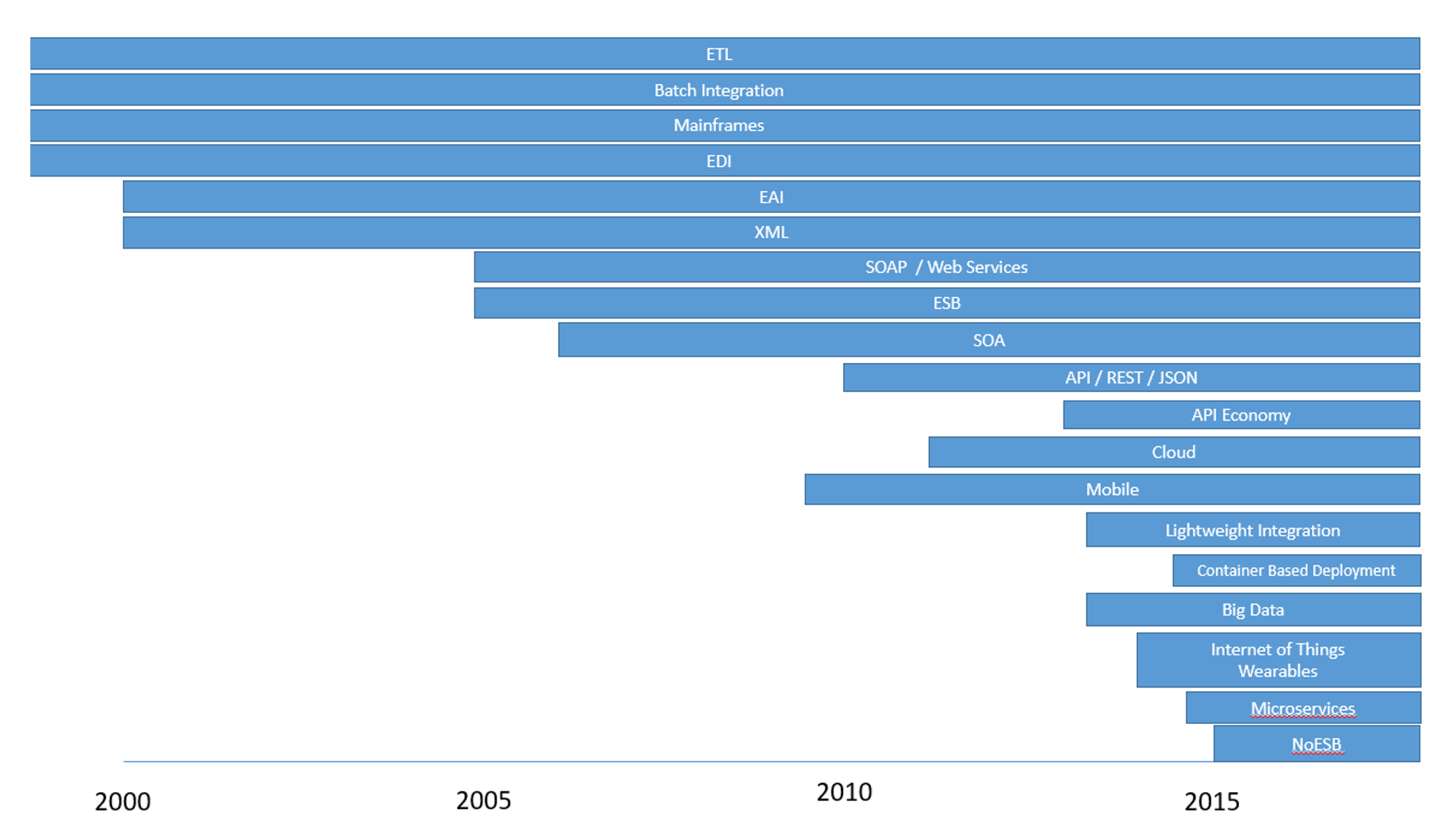- Print
- DarkLight
- PDF
If we consider the history of architecture in the integration space we will notice one big theme. Things dont tend to go away.
If we look back years ago to the types of integration we did with mainframes etc, those are still relevant today while at the same time newer integration themes have come along.
The below diagram illustrates some of this history with approximate dates going back to 2000. I know some of these approaches go back even longer than that but in the interests of keeping the discussion simple lets focus on the last 20 years or so.

In addition to the change in types of integration we need to do, there is also changes in the scale of integration. Todays web-scale integration means its feasible to be dealing with millions and billions of messages per day rather than thousands and millions.
When it comes to an enterprises integration platform we need to keep all of this in mind and build a capability which can execute well on all of the types of integration we may deal with and all of the different scales of integration we may use. This is why its tough for an organisation to have a one-size fits all approach to interation and why most organisations have a platform with a set of integration tools and they then combines the best tools to solve each integration problem while also factoring in the opportunities to build reusable solutions to minimize reinventing the wheel on each project.

